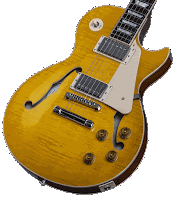It was a good year for reading, many of my favorite authors published books and I discovered some new friends thanks to GoodReads suggestions. I'm pretty sure no one reads my blog but if you are interested in my favorite books, they are in green.
- The Ares Decision - Robert Ludlum
- The Janus Reprisal - Robert Ludlum
- Without You, There is no Us - Suki Kimm
- My Promised Land:The Triumph and Tragedy of Israel - Ari Shavit
- Ghost Ship - Clive Cussler
- The Thief - Clive Cussler
- A Disruptive Invention - Peter Shackle
- Insatiable Appetites - Stuart Woods
- Jacob's Oath - Martin Fletcher
- The Girl on The Train - Paula Hawkins
- White Jade - Alex Lukeman
- The Good Girl - Mary Kubica
- The Nightingale - Kristin Hannah
- Twelve Days - Alex Berenson
- Leaving Berlin - Joseph Kanon
- Red Moth - Sam Eastland
- Bridge of Sighs - Olen Steinhauer
- The Farm - Tom Rob Smith
- Child 44 - Tom Rob Smith
- The Breach - Patrick Lee
- Hot Pursuit - Stuart Woods
- The Atlantis Gene (The Origin Mystery, #1) - A.G. Riddle
- Red Tide - Larry Niven
- Gathering Prey - John Sandford
- The Last Flight of Poxl West - Daniel Torday
- To Rise Again at a Decent Hour - Joshua Ferris
- All the Light We Cannot See - Anthony Doerr
- The Beast in the Red Forest - Sam Eastland
- Red Icon - Sam Eastland
- Havana Storm - Clive Cussler
- Radiant Angel - Nelson DeMille
- The Secret Speech - Tom Rob Smith
- The Fourth Man - Kjel Ola Dahl
- The English Spy - Daniel Silva
- Naked Greed - Stuart Woods
- Uncaged - John Sandford
- Outrage - John Sandford
- Pretty Baby -Mary Kubica
- The Family Tree - Sheri S. Tepper
- Make Me - Lee Child
- The Ways of the World - Robert Goddard
- The Corners of the Globe - Robert Goddard
- The Ends of the Earth - Robert Goddard
- Foreign Affairs - Stuart Woods
- Lights Out:A Cyber Attack, a Nation Unprepared - Ted Kopple
- Zoo Station (John Russell #1) - David Downing
- Silesian Station (John Russell #2) - David Downing
- Stettin Station (John Russell #3) - David Downing
- Potsdam Station (John Russell #3) - David Downing
- Lehrter Station (John Russell, #5) - David Downing
- Masaryk Station (John Russell #6) - David Downing
- The Einstein Prophecy - Robert Masello








